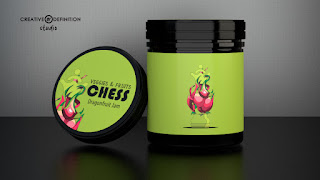Beer - modern drug or ancient wonder?
Beer is one of the oldest drinks and the third most popular drink overall after water and tea. Beer is produced with boiling water, hops, and fermenting process. In some countries beer is defined by law—as in Germany, where the standard ingredients consist of water, are malt, hops, and yeast.
So how is beer produced? A brew day begins with getting the ingredients ready, grains are up first. Whole grains are put through a gristmill that cracks and opens the kernels. This is mixed with hot water where it steeps for a time. During this process simple sugars in the grain are released. Hops are added to this sugary liquid at different intervals to extract aroma, flavor and bitterness. The result is pumped into a fermentation vessel where yeast will be added to begin the process of converting the sugars into alcohol. After fermentation is complete, many beers are filtered or run through a centrifuge to remove any particulates. Some may also be transferred to brite tanks, to allow more time for maturation.
The first beer in the world was brewed by the ancient Chinese around the year 7000 BCE. Beer may have been known in Neolithic Europe as far back as 5,000 years ago, and was mainly brewed on a domestic scale. By the 7th century AD beer was also being produced and sold by European monasteries. Weihenstephan Abbey was a Benedictine monastery in Bavaria, Germany. Brauerei Weihenstephan, located at the monastery site since at least 1040, is said to be the world's oldest continuously operating brewery.
During medieval period, the monks looked into beer as a meal replacement. They wound up developing an “unusually strong” type of beer to serve their fasting needs.
Beer is believed to be older than wine, the most popular beer in Egypt was Heqet which was a honey-flavored brew. The workers at the Giza plateau received beer rations three times a day and beer was often used throughout Egypt as compensation for labor.
Today leading beer producer is China, followed by US and Brazil, Mexico, Germany, Russia, etc. Romania is also an important beer producer, the beer pubs are considered a place of social and business meetings for the Romanian urban middle-class. Currently, Romanians are amongst the heaviest beer drinkers in the world, with an annual consumption of over 100 liters per capita in 2007. If you are interested in finding out more details about one of the new Romanian beers, check out this case study about Bucur - beer branding.
Beer design or beer branding are very important in today's market, having a label and vibe that's easily recognizable encourages customer loyalty and creates a sense of local pride.
Beer has a positive impact to cholesterol levels, lowers your risk of diabetes and strengthens your heart. Small amounts may be associated with benefits, heavy or binge drinking is associated with negative health effects.
Anyhow we can all agree that there's nothing like sipping on a cold, fizzy beer on a hot day.




Comments
Post a Comment